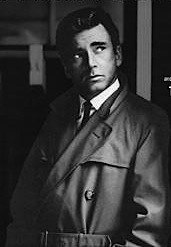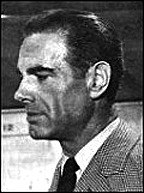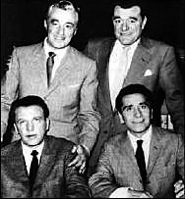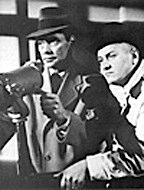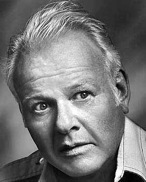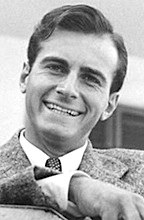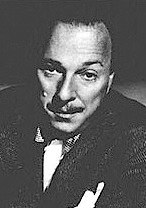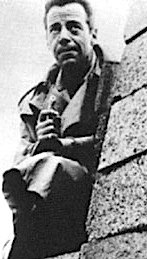FYEO’s Guide to Pre-Spy-Craze Spy Shows



SHADOW OF THE CLOAK (1951-52) DuMont
Not surprisingly, it was the late, lamented DuMont network that brought the first spy show to television. Wednesday nights at 9:30 beginning June 6, 1951, movie supporting-player Helmut Dantine starred as Peter House, top agent of something called International Security Intelligence. House went after the usual assortment of spies and saboteurs every week in 30-minute adventures broadcast live from the DuMont studios in New York. In December the series moved to Thursday nights at 9, replacing television’s first version of The Adventures of Ellery Queen, which moved from DuMont to ABC. Shadow of the Cloak left the air after a run of only 10 months, following its final broadcast on March 20, 1952.
THE DOOR WITH NO NAME (1951) NBC
DOORWAY TO DANGER (1952, 1953) NBC
Television’s second spy series was a perennial summer replacement, turning up each July for three consecutive years. The cast changed every summer, and the title changed after the first run in 1951 (Friday nights at 9 on NBC, July 6 through Aug. 17). But the format remained the same: The nameless, dangerous door opened into the office of John Randolph, director of an unnamed, top-secret U.S. government bureau, who sent his agents across the country and around the world to deal with America’s most dangerous enemies — all staged live in NBC’s New York studios.
That first year, Randolph was played by Mel Ruick, who was later often billed as Melville Ruick but either way remained virtually unknown during his three decades in movies and television. Randolph’s top agent Doug Carter was played by the equally unknown Grant Richards, and the adventures were narrated by stentorian March of Time announcer Westbrook Van Voorhis. When the show returned in 1952 — airing July 4 through Aug. 22, again on NBC Fridays at 9 p.m. — Van Voorhis and agent Carter were gone, and Randolph was played by Roland Winters (the last actor to portray Charlie Chan in the long-running movie series), who sent a different agent into danger each week. In 1953, the show turned up for a third and final run — July 3 through Aug. 21, still Fridays at 9 on NBC. This time around, Raymond Bramley played Randolph and Carter was back as his regular agent, but now he was played by an actor named Stacy Harris.
FOREIGN INTRIGUE (1951-1955) Syndicated
The most successful 1950s spy series by far, with a four-season run of 156 episodes — even though the show went through several changes of cast and format and none of the lead characters were actually secret agents. Foreign Intrigue was created and produced by the multi-talented Sheldon Reynolds with enough backing from NBC Films (the network’s syndication division), the J. Walter Thompson ad agency (for series sponsor Ballantine Beer) and investments from Reynolds’ wealthy acquaintances to shoot on location in Europe, an expensive novelty in TV’s formative years, even more so for a syndicated series.
The show went on the air in the fall of 1951 with Jerome Thor as Robert Cannon, European reporter for the American “Consolidated News Service,” and Sydna Scott as Helen Davis, fellow correspondent and friendly rival. They both were based in Stockholm and traveled the continent on stories that inevitably involved espionage, political turmoil and East-West intrigue. In the third season, James Daly as Michael Powers and Anne Preville as Patricia Bennett took over as Paris-based correspondents for Associated News. The fourth and final season dispensed with the reporters and brought in B-movie and radio veteran Gerald Mohr (who played The Lone Wolf in a series of late-40s movies) as Christopher Storm, two-fisted owner of the Hotel Frontier in Vienna, where numerous shady characters congregated.
Even as new episodes continued to be produced, the old formats were re-titled and sold in syndicated reruns by Official Films, a big name in 50s syndication. The first two seasons with Thor became Dateline Europe. The third season starring Daly was Overseas Adventure, and the Mohr episodes were re-titled Cross Current. To make things even more confusing, the entire series was sometimes re-titled Foreign Assignment in reruns.
Foreign Intrigue is often a TV footnote as the first American series to be broadcast in Canada when CBC Television went on the air in 1952. And the show was regarded highly enough at home to receive Emmy nominations three years running, as best “mystery, action or adventure program” (but Dragnet was always the winner).
Foreign Intrigue also notably was one of the first television series to inspire a movie version. After the series ended production in 1955, Reynolds produced and directed a picture also titled “Foreign Intrigue,” with a script he wrote from a story credited to himself, Gene Levitt (who wrote for the TV series and went on to produce Hawaii Five-0) and Harold Jack Bloom (who also wrote for the series and whose later credits include The Man From U.N.C.L.E. and “You Only Live Twice”). The film almost returned to the original premise of an American newsman in Europe but Reynolds dumped his TV cast and went for name value by casting Robert Mitchum in the lead. Mitchum played a press agent rather than a reporter, but he did pal around with Associated News correspondent Tony Forrest (John Padovano), a recurring character in all three versions of the TV show (where he was also played by Padovano, who doubled as associate producer). United Artists released the picture in July 1956.
DANGEROUS ASSIGNMENT (1952) Syndicated
The first TV spy show brought over from radio starred suave, second-string movie leading man Brian Donlevy as Steve Mitchell, American undercover agent. The NBC Radio show, also starring Donlevy, started early in 1950 and ran for three years, outliving the syndicated TV version’s single batch of 39 episodes that went on the air in January 1952. The radio and TV formats were identical: Mitchell received his dangerous assignments from a boss identified only as The Commissioner (played by Herb Butterfield on both radio and TV), who sent him around the world to exotic locales, solving cases vital to American interests. Donlevy co-produced the TV version with NBC, and NBC Films distributed the show.
RENDEZVOUS (1952) ABC
Television’s shortest-lived spy show by far, Rendezvous ran for exactly four weeks on ABC, Wednesdays at 9:30 (the same timeslot Shadow of the Cloak originally filled on DuMont), from Feb. 13 to March 5, 1952. The show also featured the first female lead in a spy series — or in any mystery-adventure series for that matter — sultry film star Ilona Massey. In her first regular role on television, Massey played French singer Nikki Angell, who was a member of the resistance during the war. Now she was the feature attraction at her own swanky Paris nightclub, Chez Nikki, where she continued her underground activities against the Communist agents and other subversive elements threatening her beloved France and the Free World. Massey, once a member of the Vienna State Opera who also sang in some of her movies, did a song every week in the show’s nightclub setting. The series was broadcast live from New York.
THE HUNTER (1952 and 1954) CBS, NBC
This CBS filmed series was a summer replacement in 1952. Barry Nelson starred as Bart Adams, a wealthy American businessman who traveled the world foiling Red plots as he looked after his business interests. It was something of a gimmick role, with Adams portrayed as a master of disguise who changed his appearance for each case (perhaps his undercover work here prepared Nelson for his role as James Bond in the 1954 CBS production of Casino Royale). The Hunter was the first filmed spy series on a network, but it was not shot in Hollywood. R.J. Reynolds Tobacco produced the series at Pathescope Studios in New York. The show premiered Thursday, July 3 at 9 p.m. but CBS immediately shifted it to Wednesdays at 9:30, where most of the 13 episodes ran through Sept. 24 (two were pre-empted by coverage of the 1952 political conventions).
In the summer of 1954, R.J. Reynolds placed reruns of these original 13 episodes on NBC Sunday nights at 10:30 beginning July 11. When the new season started, Reynolds continued the series on NBC with 13 new episodes starring Keith Larsen (later the star of Northwest Passage and The Aquanauts) as Adams. These ran in the same 10:30 Sunday timeslot from Sept. 26 through Dec. 26, 1954 (meanwhile, Nelson was appearing in the second season of his filmed CBS sitcom My Favorite Husband and was on the air live Oct. 21 in Casino Royale). Official Films distributed all 26 episodes of The Hunter in reruns without drawing much interest.
BIFF BAKER, U.S.A. (1952-53) CBS
This series brought international intrigue to the old husband-and-wife-amateur-sleuths ploy. Biff Baker (played by Alan Hale, Jr.) and his wife Louise (Randy Stuart) traveled the world in search of products for their importing business. And wherever they went, they got into trouble, stirring up nests of spies, smugglers, guerillas, refugees and general political unrest. The series got a late start in the fall of 1952 because CBS ran a public-service program called Pick the Winner in the timeslot, leading up to the national elections in November. Biff and Louise began their adventures on Nov. 6, Thursday nights at 9 (where CBS had premiered The Hunter in July), and concluded their brief run as not-so-secret agents on March 26, 1953 (meaning CBS ran only 21 of the 26 episodes made by Revue Productions, the television arm of MCA and a prolific supplier of both syndicated and network programming throughout the 1950s). The series continued to turn up in reruns through the late 50s.
I LED THREE LIVES (1953-1956) Syndicated
The most flagrantly red-baiting of all television spy shows was based on the best-selling book of the same title, written by Herbert A. Philbrick, a Boston advertising man who secretly joined the American Communist Party as an undercover agent for the FBI. Of course Philbrick performed his counterspy duties in the 1940s immediately before, during and after World War II, not at the height of the McCarthy-era Red Scare when the show was produced and distributed by Ziv Television, the leader in first-run syndication.
Still, the series was a hit for three seasons and more popular in reruns for years afterward than many other shows of the period. It even received Emmy nominations in its first and second seasons (but like Foreign Intrigue it always lost to Dragnet).
I Led Three Lives went on the air in September 1953 with Richard Carlson (star of such other 50s classics as “It Came from Outer Space” and “Creature from the Black Lagoon”) as Philbrick and Virginia Stefan as his wife Eva, the only person outside the FBI who shared his dangerous secret, described in the exquisitely bombastic opening every week: “This is the fantastically true story of Herbert A. Philbrick, who for nine frightening years did lead three lives — average citizen, member of the Communist Party, and counterspy for the FBI.” John Zaremba (Dr. Swain on The Time Tunnel a decade later) played Philbrick’s FBI contact, Special Agent Jerry Dressler.
The opening announcer also noted that, “For obvious reasons, names, dates and places have been changed, but the story is based on fact.” That may have been true when they started out — Philbrick himself was consultant to the series — but at the rate of 39 episodes a year, the plots grew far afield from anything Philbrick actually witnessed. By the third season, the televised Communist threats to the American way of life were increasingly far-fetched.
With an eye on increasing their future value, Ziv shot several of its series — including I Led Three Lives — in color, but of course color prints were never distributed during the show’s first run or 1950s reruns. By the time color was in demand in the late 1960s, I Led Three Lives was so outdated that the investment never really paid off.
I Led Three Lives had no connection with the similarly themed 1951 movie “I Was a Communist for the FBI,” based on the true story of Matt Cvetic, another loyal American infiltrator — except that Ziv, after producing a radio series about Cvetic, was unable to obtain TV rights and went with Philbrick’s story instead, making Philbrick America’s most famous counterspy.
ORIENT EXPRESS (1953-54) Syndicated
Orient Express was an anthology of stories about people affected by the post-war political turmoil in Europe, or so it claimed. Apparently a number of episodes were actually pilots for unsold mystery and adventure series, so storylines and production values were all over the map, as was the show itself. Some episodes were made in the United States, some in Britain, a few were actually shot in Paris. Collecting TV rejects was certainly an economical way to put together a minor and quickly forgotten series. National Telefilm Associates (NTA), one of the big names in syndication, released 26 episodes in the fall of 1953, and managed to sell the series to the BBC for a 1954-55 U.K. run. The show then sank into total obscurity — definitely not a title, such as Foreign Intrigue, Biff Baker, U.S.A. and I Led Three Lives, that continued to be seen in reruns throughout the 50s.
SECRET FILE, U.S.A. (1954-55) Syndicated
Following Foreign Intrigue’s lead, this series was shot in Amsterdam at Cinetone Studios, with Robert Alda as Major William Morgan of U.S. Army Intelligence, chasing down spies in Cold War Europe. Some episodes were flashbacks to Morgan’s service behind enemy lines during World War II. And unusually for dashing spy heroes, Morgan was married. His wife Peggy was played by Canadian actress Kay Callard, a veteran of both U.S. and British television. Official Films distributed 26 episodes in first-run syndication beginning in the fall of 1954.
TOP SECRET (1954-55) Syndicated
Paul Stewart as Professor Brand and Gena Rowlands as Agent Powell worked for the Bureau of Scientific Information in this juvenile-slanted series, investigating spy plots with a scientific or medical angle, aided by their 1950s super-computer. Produced in a now totally passé format: the 15-minute episode that could be paired to fill a half-hour or dropped into one of the quarter-hour timeslots that were common during daytime and early evening hours in television’s first decade. Only 26 segments were made and released in the fall of 1954 by Revue. Paul Stewart continued to play crafty doctors, steely-eyed crime bosses and gruff bureaucrats for another 20 years, including a brief stint in the 1966 spy series The Man Who Never Was. Gena Rowlands was just starting her long film and television career in which she often worked with husband John Cassavetes.
PASSPORT TO DANGER (1954-55) Syndicated
Cesar Romero starred as suave Steve McQuinn, who was not a secret agent but a diplomatic courier, ferrying top-secret dispatches to United States embassies around the world. He still managed to stumble into the usual international intrigue, meeting spies, assassins and revolutionaries in every corner of the globe. Romero gave the role his customary light and debonair touch. Hal Roach Studios produced 39 episodes that started airing in November 1954, distributed by ABC Films, that network’s syndication arm.
THE ADVENTURES OF THE FALCON (1954-55) Syndicated
Charles McGraw played gruff and tough secret agent Mike Waring, codenamed The Falcon. The character was originally Michael Waring, alias the Falcon, one of those gentleman adventurers who solved crimes while thumbing his nose at the police. That was the Falcon seen in a series of 1940s B-movies from RKO and heard on radio from 1943 to 1954. He was refurbished for his instant move from radio to television into a government agent traveling the globe to uncover spies and saboteurs. Bernard L. Schubert of Topper fame produced the 39 episodes released by NBC Films in the fall of 1954.
CRUSADER (1955-1956) CBS
Brian Keith portrayed freelance journalist Matt Anders, a character with a single-minded purpose in life: to help people escape to freedom from behind the Iron Curtain, and from oppression wherever he found it. His motivation was the death of his mother, who was trapped in Poland after the Communist takeover and died there in a concentration camp. Anders’ crusade began Oct. 7, 1955, Fridays at 9 p.m. on CBS. The series had a successful first season but the second was cut short, ending on Dec. 28, 1956. Many second-season episodes dropped the political trappings in favor of more ordinary crimes. Revue produced 39 episodes the first season, 13 the second, and put all 52 into syndication after Crusader left the network.
THE MAN CALLED X (1956) Syndicated
Barry Sullivan starred as globetrotting American agent Ken Thurston, a tough but sophisticated operative code-named “X.” The concept was transferred largely intact from the radio series of the same title, which proved so enduring it ran, off and on, from 1944 to 1952 on the CBS, ABC and NBC radio networks. Ziv brought it to television just as I Led Three Lives was winding down, but produced only 39 episodes that started airing in January 1956. The popular series reportedly was too expensive to continue, so the same 39 episodes were repeated on stations around the country through the rest of the 50s.
I SPY (1956) Syndicated
Yes, it’s TV’s only example of two entirely different and completely unconnected spy shows using the same title. The original, largely forgotten
I Spy was an anthology of supposedly true spy tales from throughout history, all introduced by Raymond Massey as Anton the Spymaster. The majority of stories were from World War II and the Cold War, but others featured spies in such settings as the American Civil War, World War I, Napoleon’s French empire and the court of Louis XIII. An outfit called Guild Films, whose biggest hit was The Liberace Show, made 39 episodes of I Spy that started airing in January 1956.
O.S.S. (1957-58) ABC
In the decade’s only instance of backsliding to fight Nazis every week instead of Commies, Australian actor Ron Randell starred as Captain Frank Hawthorne, a top agent of the Office of Strategic Services, America’s wartime spy agency. With Lionel Murton as his boss, known only as (shades of Get Smart) The Chief, and Robert Gallico as his sidekick, Sgt. O’Brien, Hawthorne worked throughout the European theater, often with local resistance groups, to thwart the German war machine. The show’s authenticity was supposedly guaranteed by technical consultant Colonel William Eliscu, an aide to real OSS chief William Donovan.
The show was filmed in England and France by co-producer ITC. It premiered on ABC on Sept. 26, 1957, running Thursday nights at 9:30. In search of a better timeslot, the network shifted it to Mondays at 7:30 in January, but the series was soon canceled. ABC aired the last episode on March 17, 1958, and then dropped the show without running any repeats. ITC made 26 episodes, which also aired in 1957-58 on Britain’s commercial network ITV.
BEHIND CLOSED DOORS (1958-59) NBC
Another series supposedly based on real incidents, drawn from the files of its technical consultant, retired Rear Admiral Ellis M. Zacharias. The admiral served as deputy chief of U.S. Naval Intelligence during World War II and recounted some of his now-they-can-be-told adventures in a book titled Behind Closed Doors. The cases seen on TV were updated to a contemporary Cold War setting. Bruce Gordon, soon to gain fame as gangland boss Frank Nitti in The Untouchables, played Commander Matson, a naval officer who served as series host and narrator, and sometimes turned up as a character in the stories. NBC ran the show Thursday nights at 9, from Oct. 2, 1958, through April 9, 1959. Screen Gems filmed the series’ 26 episodes.
COUNTERSPY (1958) Syndicated
A late-in-the-game attempt to transfer another popular radio series to television, and a very unsuccessful one. The adventures of David Harding, American counterspy, started in May 1942 on NBC’s Blue Network. Naturally his early years were spent battling Axis agents. After the war, Harding turned his attention to Commies and various other enemies of freedom, somehow running on and on until Counterspy became one of the last survivors of American radio drama, ending its days on Mutual in 1957.
Then it was finally time for television. Don Megowan played Harding in the series produced by Bernard L. Schubert (who was responsible for such early TV fare as Topper, Mr. and Mrs. North and The Adventures of the Falcon). Megowan had a long and unremarkable career in film and mostly television, both before and after Counterspy played in a handful of markets in the fall of 1958 and quickly vanished. An attempt to resuscitate the project with a 1959 pilot starring Reed Hadley — once the star of the dawn-of-television and rerun-perennial crime-buster series Racket Squad — went nowhere.
THE INVISIBLE MAN (1958-1960) CBS
One of ITC’s first truly memorable series came to CBS as a result of some fast schedule shuffling caused by the sudden demise of The $64,000 Question in the wake of the quiz show scandals. The series was set for a September 1958 start, paired with another spy fantasy titled World of Giants (see next entry), but both were dropped in a last-minute schedule shakeup. The Invisible Man finally debuted on Nov. 4, 1958, running through May in the 8 p.m. Tuesday timeslot, then through July at 7:30 Thursdays. CBS brought the show back in the summer of 1960, again at 7:30 Thursdays, with some previously unseen episodes. ITC made 26 episodes that were also seen in Britain in 1959 and 1960.
In this version of the H.G. Wells saga, Dr. Peter Brady, a brilliant English physicist researching the possibility of invisibility, accidentally becomes invisible himself but is unable to reverse the process. Soon realizing that invisibility makes him the ultimate in secret agents, Brady volunteers for special missions with British Intelligence — although the spy stories were spelled by some standard crime and adventure plots. Brady was aided throughout by his sister Diane and niece Sally.
For promotional purposes, the identity of the actor who played Brady under the usual facial bandages and sunglasses was never revealed, but it was acknowledged that a second actor dubbed Brady’s voice. Official Films co-produced the series and distributed the reruns in the United States. The Invisible Man was produced by Ralph Smart — who then created and produced Danger Man, the series that was both chronologically and conceptually the first 1960s spy show.
WORLD OF GIANTS (1959) Syndicated
The only thing better than an invisible spy would be a spy who was only six inches tall, right? Marshall Thompson (later of Daktari fame) played American agent Mel Hunter, victim of a lab accident that left him the inhabitant of a world of giants. The mini-agent usually traveled inside a specially constructed briefcase carried by his partner Bill Winters (played by Arthur Franz) as they broke up spy rings, recovered stolen secrets and tracked down missing rockets. Several episodes were directed by Jack Arnold, who was on familiar ground after helming “The Incredible Shrinking Man.”
World of Giants was produced by Ziv, which by now was providing filmed shows to the networks while continuing to produce first-run syndie-series. The company made 13 episodes of World of Giants to fill an initial order from CBS for its 1958-59 lineup. The network planned to air the show Wednesdays at 8 p.m., followed by The Invisible Man, but both shows were bounced in favor of an in-house, video-taped adventure-drama titled Pursuit (produced by Norman Felton, who went on to spy-show glory with The Man From U.N.C.L.E.). CBS claimed it would find another timeslot for World of Giants but somehow never did. After The Invisible Man went on the air, network programmers apparently decided one gimmicky secret agent was enough. Ziv took back the show and put the 13 episodes into first-run syndication in the fall of 1959.
THE FOUR JUST MEN (1959-60) Syndicated
Inspired by the musty Edgar Wallace novel (filmed in 1921 and 1939), this TV series updated the premise of four old war comrades reuniting to battle peacetime villainy. The quartet of World War II commandos — played by Britain’s Jack Hawkins, Americans Dan Dailey and Richard Conte, and Italy’s Vittorio De Sica — answered their dying wartime commander’s call to reunite for battle against tyranny and injustice around the world, financed by the small fortune he’s leaving for that purpose. But then they went their separate ways, each playing the lead in an almost equal number of the show’s 39 episodes.
Hawkins was London-based Member of Parliament and self-styled private investigator Ben Manfred; Dailey played the Paris-based American reporter Tim Collier; Conte was New York lawyer Jeff Ryder; and De Sica portrayed wealthy Roman hotelier Ricco Poccari. All four shared their adventures with secretaries and assistants. Dan Dailey was the luckiest of the group — his secretary Nicole was played by Honor Blackman, three years before she joined Patrick Macnee in The Avengers.
Like all series featuring independent adventurers rather than official operatives, plots ranged far and wide to include a number of standard crimes and the inevitable old friends with dreadful problems, but there were more than enough encounters with enemy agents, endangered foreign dignitaries, Nazi war criminals, black-market arms dealers and even slave traders to justify the show’s inclusion here. ITC produced the series in Britain with its customary polish, to air in the 1959-60 season on the U.K. commercial network and in syndication in the United States beginning in September 1959.
FIVE FINGERS (1959-60) NBC
Five Fingers was a landmark in the evolution of TV spies: the first hour-long spy show, the first made by a major film studio (20th Century-Fox), and the first to display the relatively more sophisticated approach and slick production that marked spy shows of the 1960s. It was also an utter failure, running for only three months.
Fox claimed the series was based on its 1952 James Mason film “5 Fingers,” a dramatization of a true story recounted in the book Operation Cicero by L.C. Moyzisch. Mason played a valet to the British ambassador to Turkey during World War II who sold Allied secrets to the Germans. Of course the TV show had none of that. Fox simply used a spy-related title it already owned for this series about American agent Victor Sebastian, fighting the good Cold War fight in 1959.
David Hedison, fresh out of “The Fly,” played double-agent Sebastian, who posed as a theatrical agent in Europe who’s sold out to the Reds while actually working for Uncle Sam. A very young Luciana Paluzzi played Simone Genet, a singer Sebastian represented who quickly became his girlfriend as well. Paul Burke frequently appeared as Sebastian’s contact Robertson.
It was only after Fox produced a standard half-hour pilot that NBC, noting the success of one-hour mysteries and westerns on the other networks (Cheyenne, Maverick, Perry Mason, 77 Sunset Strip, etc.) scheduled Five Fingers as its first hour-long adventure series. The pilot was expanded into the premiere episode, “Station Break,” with Eva Gabor, Theo Marcuse and notorious Hollywood restaurateur Mike Romanoff among the guest cast. The series aired Saturday nights from 9:30 to 10:30 beginning Oct. 3, 1959.
Five Fingers was one of three series Fox sold for the 1959-60 season after stealing producer Martin Manulis away from CBS and Playhouse 90 to jumpstart the studio’s faltering TV division. The Many Loves of Dobie Gillis on CBS and Adventures in Paradise on ABC were hits. But Five Fingers, airing opposite Have Gun – Will Travel and Gunsmoke, was a flop and NBC quickly decided not to extend its initial 16-episode order. Then the network pre-empted Five Fingers twice so only 14 episodes got on the air, the last one on Jan. 9, 1960 (so the Jan. 2 and Jan. 9 broadcasts technically make Five Fingers the first 1960s spy show).
With only 16 episodes, Five Fingers had no rerun potential, so Fox tried to recoup a bit of its investment with an unusual move: The studio released four episodes to British movie theaters in 1961. But unlike other “movies” made from TV shows that achieved feature length with added scenes or by cutting together several episodes, the Five Fingers episodes were among the shortest “feature films” ever seen, playing British cinemas in their original 50-minute TV length. British film critics, needless to say, dismissed them as cheap rubbish.
INTERPOL CALLING (1960) Syndicated
Fighting crime on an international level were Inspector Paul Duval (Charles Korvin) and Inspector Mornay (Edwin Richfield), venturing throughout the world from the Paris headquarters of Interpol, the International Criminal Police Organisation. Not truly a spy show, but with plenty of unique crimes and international adventures in the usual polished production from ITC — and Interpol, as the only real-life organization remotely comparable to the worldwide secret agencies of fiction, always holds a certain fascination. Co-produced by Britain’s venerable J. Arthur Rank film company and American producer Jack Wrather of Lassie and Lone Ranger fame, who had partnered with ITC’s American operation. They made 39 episodes for the 1959-60 season on Britain’s commercial network. ITC put the series into U.S. syndication in February 1960.
MAN FROM INTERPOL (1960) NBC
Two British-made Interpol series in the same year? By all accounts the inferior of the two, Man From Interpol nevertheless got an American network berth on NBC. Richard Wyler starred as Anthony Smith, a Scotland Yard man attached to Interpol. John Longden was his boss, Inspector Mercer. Smith investigated crimes around the world, many of a bizarre or politically sensitive nature, bringing the series within the realm of international intrigue (often due to writer Brian Clemens, who cut his teeth on a large percentage of the scripts for this show).
The series was produced by Danziger Photoplays, a British-based company headed by American brothers Edward and Harry Lee Danziger, who churned out numerous low-budget features and TV programs in the 1950s. Perhaps the only notable aspect of Man From Interpol was the music composed by British jazz drummer and bandleader Tony Crombie. His scores were considered British television’s first attempt to follow the Peter Gunn lead of underscoring adventure with jazz, and led to a popular soundtrack album released in Britain and the United States.
NBC ran Man From Interpol Saturday nights at 10:30 beginning Jan. 30, 1960, just three weeks after Five Fingers was dropped from the 9:30 slot and replaced by a public affairs show. Man From Interpol replaced It Could Be You, an audience participation show that the network took in and out of production to fill holes in the schedule. And once on the air, NBC doggedly ran every last one of Interpol’s 39 episodes, continuing well into the start of the new fall season. The last episode aired Oct. 22, 1960 — after which NBC turned the timeslot back to its affiliates for the rest of the year. The show also ran in 1960 in various timeslots on the stations making up Britain’s commercial network. NBC aired Saturday afternoon reruns in 1961.
COUNTERTHRUST (1960) Syndicated
Produced in the Philippines, with Tod Andrews (star of the syndicated Civil War series The Gray Ghost), 1957 Deb Star and longtime mid-level film and TV actress Diane Jergens (“Desk Set,” “High School Confidential,” Make Room for Daddy, 77 Sunset Strip, etc.), and Filipino actor Victor Diaz (who went on to a long career in Filipino action films) as American agents working against Communist subversion in the Far East. Only 13 episodes were co-produced and distributed by ABC Films in early 1960. After the show’s fast failure, the producers tried to recoup by stringing together several episodes into a quickie feature released in 1961 as “Espionage – Far East” (a title so obscure it appears in almost no film references and which probably never got an American release).
THE THIRD MAN (1960-1962) Syndicated
Harry Lime was a charming scoundrel but thoroughly rotten in Graham Greene’s novel and Carol Reed’s famed 1949 film of “The Third Man,” with Orson Welles as Lime. The character was cleaned up a bit when Welles played him again in a 1952 radio series. By 1959, when this TV series went into production, Lime was completely rehabilitated as a highly successful international business tycoon played by Michael Rennie — a tycoon with a somewhat shady past, that is. Lime traveled the world to look after his various enterprises and investments, and like Simon Templar he ran into all sorts of spies, crooks and evil schemes wherever he went, exposing crimes the local police were always ready to blame on him. Jonathan Harris, already perfecting his Dr. Smith persona, played Lime’s majordomo and punctilious head bookkeeper Bradford Webster.
James Mason tentatively accepted the starring role during pre-production in 1958 but ultimately turned it down, so Rennie, already well known to British and American audiences, got the job. In an unusual co-production deal, about half the episodes were produced in Britain by the BBC, which started airing the series in October 1959. The rest were made in Hollywood by U.S. syndication giant NTA, which first released them to American stations in September 1960. Two years of production turned out a total of 77 episodes.
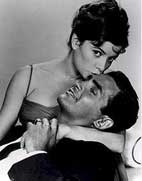
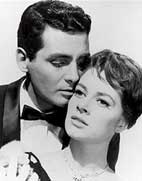
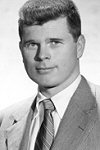
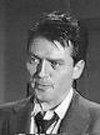
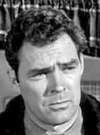
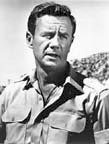
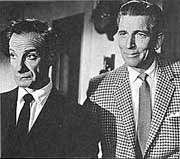
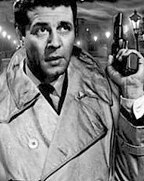
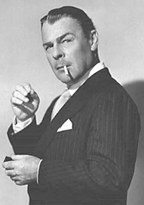
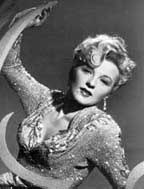
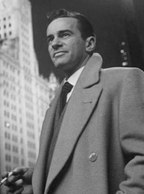
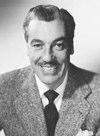

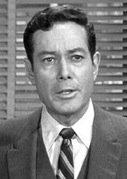
Helmut Dantine
Roland Winters
Jerome Thor in “Foreign Intrigue”
Gerald Mohr as he appeared in the fourth season of “Foreign Intrigue”
Ilona Massey
Brian Donlevy
Barry Nelson, top, and Keith Larsen
Richard Carlson
Charles McGraw
Cesar Romero
Barry Sullivan in “The Man Called X”
Don Megowan
The unknown star of “The Invisible Man”
Marshall Thompson
The Four Just Men: standing, Vittorio De Sica and Jack Hawkins; seated, Dan Dailey and Richard Conte
David Hedison and Luciana Paluzzi in “Five Fingers”
Richard Wyler in “Man From Interpol”
Charles Korvin in “Interpol Calling”
Tod Andrews
Jonathan Harris and Michael Rennie in
“The Third Man”
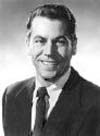
Ron Randell
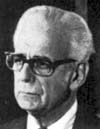

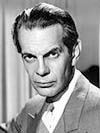
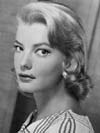
Paul Stewart, Gena Rowlands
Raymond Massey
Alan Hale, Jr.
